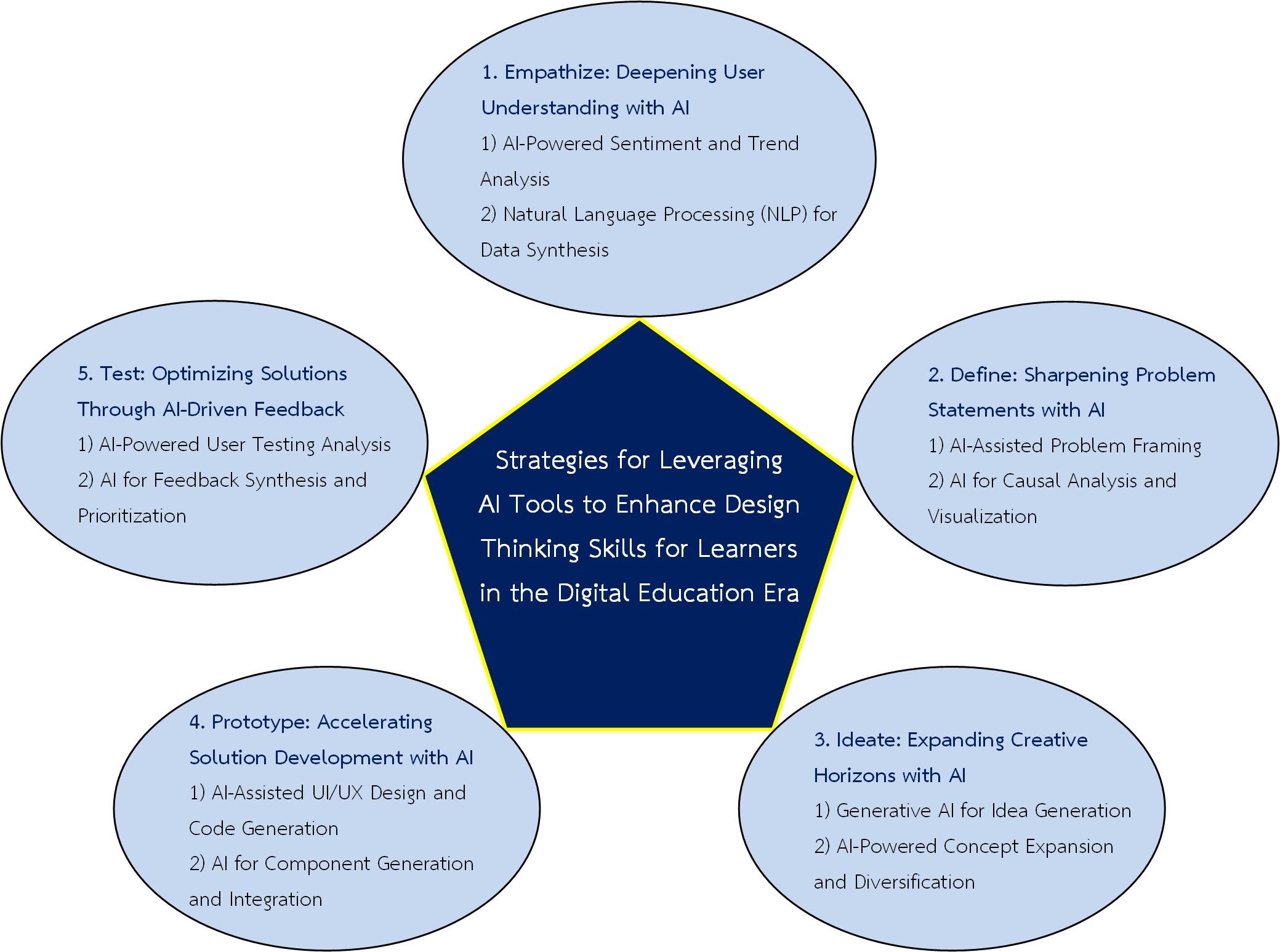Strategies for Leveraging AI Tools to Enhance Design Thinking Skills for Learners in the Digital Education Era
Main Article Content
Abstract
This article outlines key strategies for integrating Artificial Intelligence (AI) tools into Design Thinking pedagogy to enhance learners’ skills in the digital education era. The core concept positions AI as an “enabling assistant” that expands capabilities in critical thinking, creativity, and problem-solving. AI efficiently manages tasks such as in-depth data analysis for user needs in the Empathize phase, expanding new concepts for diverse ideation in the Ideate phase, accelerating prototyping, and refining solutions with AI feedback mechanisms in the Test phase. This approach aims to reduce learners' cognitive burden, allowing them to focus on deep thinking and complex, human-centered decision-making. A crucial strategy involves cultivating essential human skills alongside AI expertise. This includes teaching prompt engineering to extract valuable insights from AI and fostering the ability to critically evaluate AI outputs for biases, inaccuracies, or limitations. Instilling a deep understanding of ethics is also vital, guiding learners to comprehend the social impacts and responsible use of AI in design. Educators play a central role as facilitators and mentors, guiding learners to use their human-centered judgment in final decisions, ensuring human insight remains core to the innovation process. Implementing these recommendations transforms learners from mere technology consumers into “agile and discerning innovators”. They will not only be proficient in using modern AI tools but also practice deep decision-making, critical sharpness, and ethical awareness essential for applying Design Thinking to complex real-world problems. This approach prepares learners to be adaptable, creative, and responsible contributors in an increasingly AI-driven society.

